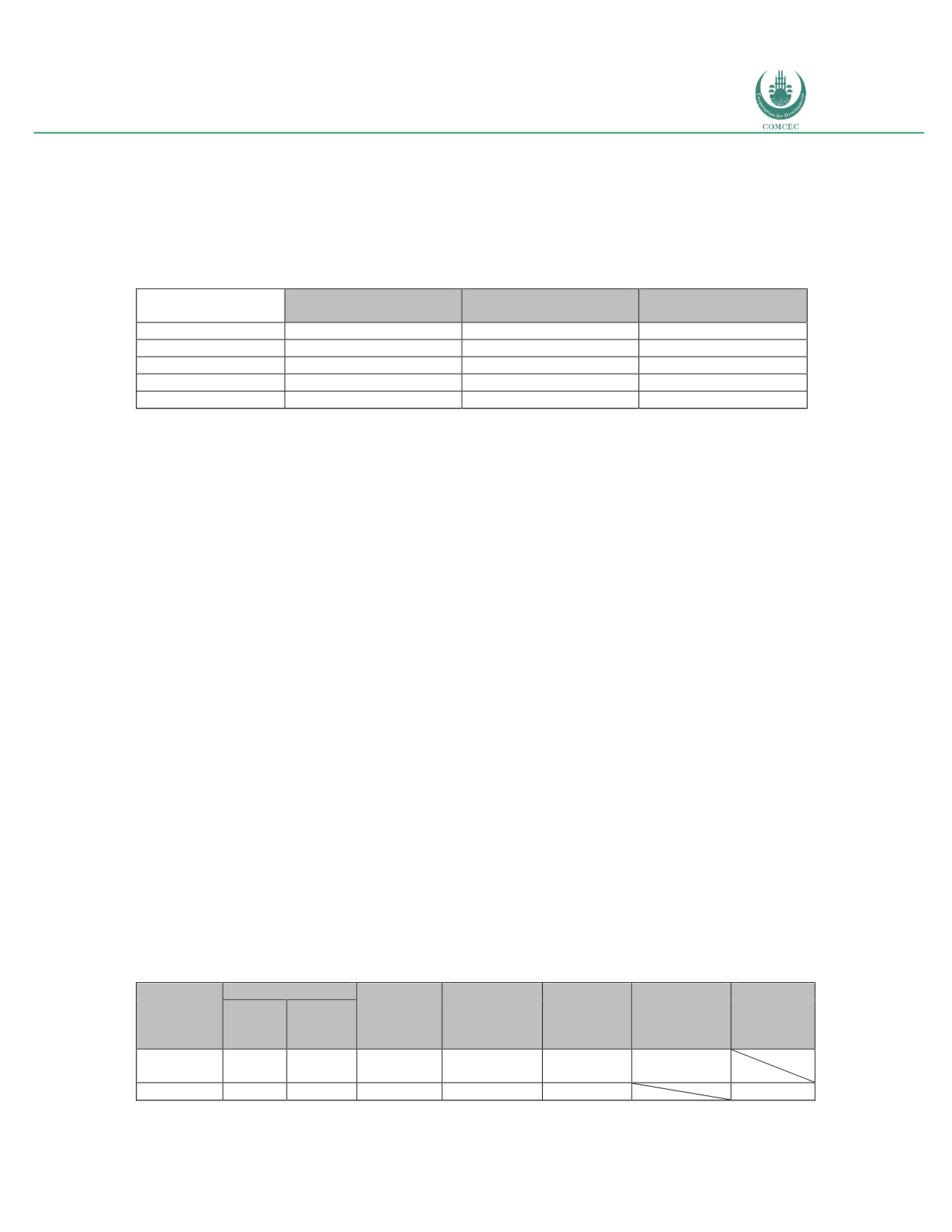

Increasing Broadband Internet Penetration
In the OIC Member Countries
89
countries, the demand gap ranges between 10% and 20% (Chad, Indonesia, Kazakhstan, Oman,
Qatar, Sudan, and Uzbekistan), while in the rest of countries, the demand gap exceeds 20%.
When prorated by population, the mobile broadband demand gap across the OIC Member
Countries varies widely (see table 34).
Table 34: OIC Memb r Countries: Mobile broadband demand gap (2015)
Mobile Broadband
Coverage (3G) (
%
)
Mobile Broadband
Penetration (
%
)
Mobile Broadband
Demand Gap (
%
)
OIC Asian Region
62.69
29.62
33.07
OIC African Region
57.71
17.30
40.41
OIC Arab Region
74.30
42.09
32.21
Total OIC
64.16
29.41
34.75
OECD
97.78
87.17
10.61
Sources: GSMA Intelligence; International Telecommunications Union; Telecom Advisory Services analysis
The difference between the mobile broadband demand gap among OECD countries and OIC
Member Countries is clear. Among industrialized countries, the mobile broadband supply and
demand are close to reaching equilibrium with only 10.61% of the population covered by
networks not acquiring the service. The situation is more worrisome among the OIC Member
Countries: while the gap reaches 40.41% among African countries, in the case of Asian and
Arab OIC Member Countries, the demand gap hovers at around 33%, bringing the prorated
average for the whole community at 34.75%.
The factors driving these high numbers? In Chapter III, it was explained that the residential
broadband demand gap is the result of three obstacles:
•
Limited affordability: certain portions of the population either cannot acquire a
device or purchase the subscription needed to access the Internet,
•
Lack of digital literacy,
•
Lack of relevance or interest: the value proposition of applications, services, and
content does not fulfill a need of the adopting population.
A compilation of research on adoption barriers indicates that affordability remains a
preeminent variable in explaining the non-adoption of broadband, particularly in emerging
countries. Among the OIC Member Countries, approximately 9 % of non-adopters have
responded that affordability is one of the reasons for not acquiring broadband, while 6%
mentioned lack of digital literacy and 14% responded that they either did not need the
Internet or argued that a cultural barrier prevented them from acquiring the service (see table
35).
Table 35: Reasons of broadband non-adopters for not purchasing broadband (percentage of
responses) (%)
Country
(year of
survey)
Cost is too high Lack of
Digital
Literacy
Do not need
it or
“cultural
reason”
Privacy or
security
concern
Acces
Internet
elsewhere
Service is
not
available
Service Handset
Bahrain (2015)
3.70
4.20
6.80
10.30
0.20
3.80
Egypt
1.60
1.90
0.60
1.60
1.30
56.40
















